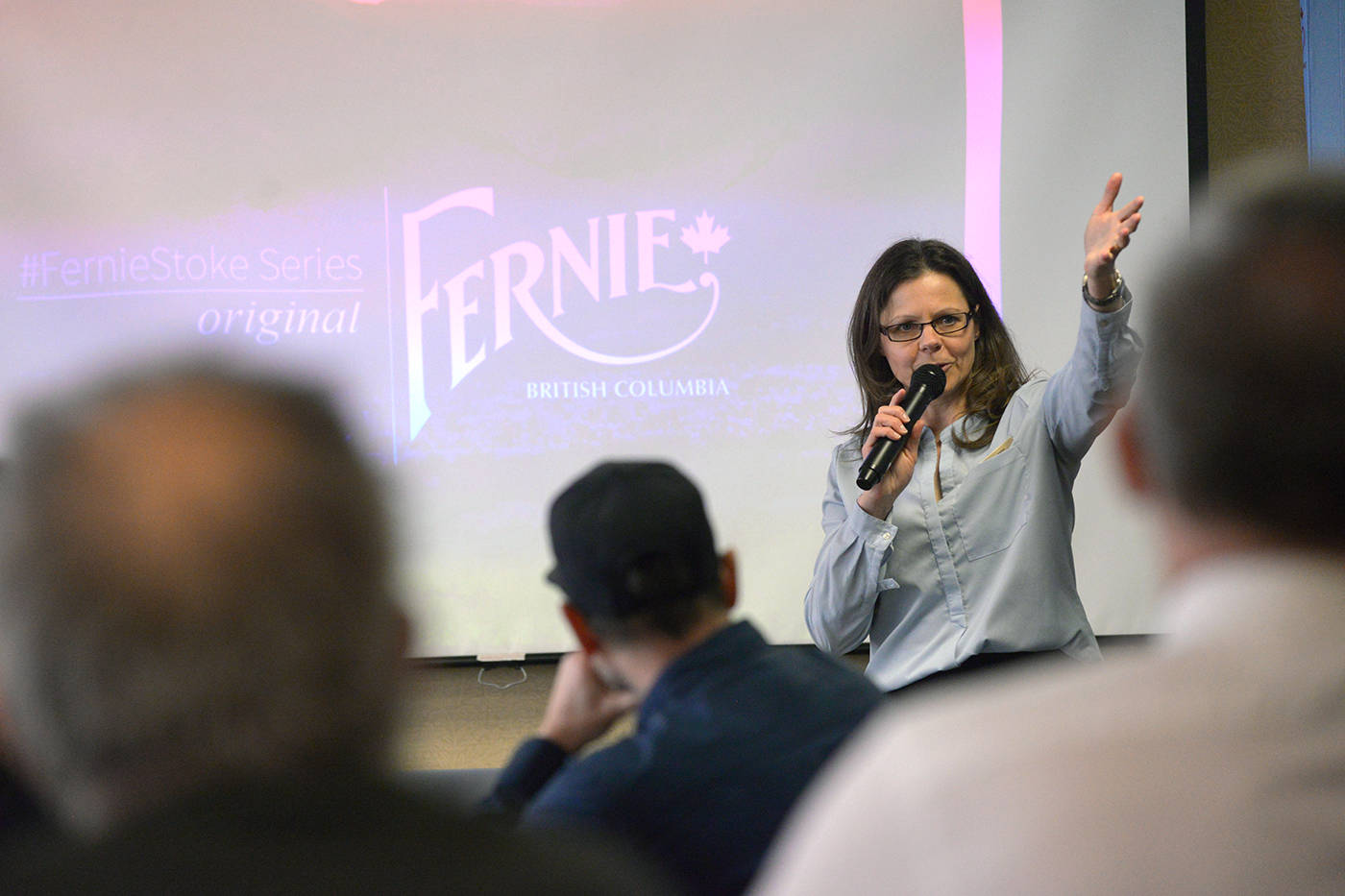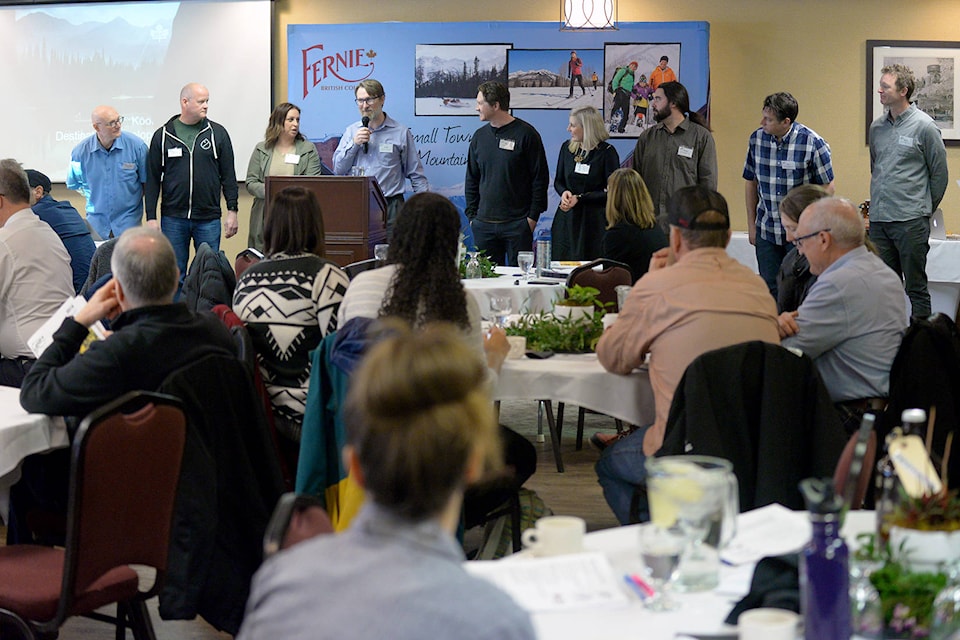Last Thursday, Tourism Fernie held its annual general meeting, which was well attended with over 100 people.
Jeremiah Pauw, Mark Ormandy and Andrew Hayden were elected to the board as new directors. 2018 served as Tourism Fernie’s 12th year and the board members reminisced on their tremendous growth since then.
Tourism Fernie executive director Jikke Gyorki explained where the organization has been and where it’s going. Fernie, she explained, has become a household name in the tourism industry and is growing in popularity every year.
In order to maintain the thriving tourism sector, Tourism Fernie has identified key issues that need to be addressed in the community. These were identified through a public survey involving 583 residents and 113 businesses.
Dan Wilson with the Whistler Centre for Sustainability, alongside Gyorki, explained the results of the survey, which they have implemented into Fernie’s first Tourism Master Plan.
Concerns highlighted in the survey included housing affordability and availability, the possible loss of authenticity and small town feel, capacity in peak periods, the cost of living and degradation of nature.
Referencing the importance of social media, Gyorki spoke about how Tourism Fernie is working to make booking, exploring and adventuring easier for newcomers, and people of all abilities.
She also said that it is time to focus on the hidden gems in Fernie: the arts, the culture, the culinary diversity, in order to enhance visitors’ experience. What do you do when it’s raining? What about when it’s -30C, she asked at the AGM, adding that Tourism Fernie will focus on how to market experiences that accommodate these conditions.
There are several external factors that affect tourism in Fernie, Gyorki explained, including the Alberta economy, coal and gas prices, and forest fires, which the Tourism Master Plan will aim to address.
Emilie Cayer-Huard, Industry & Destination Development Specialist with Kootenay Rockies Tourism, commended Fernie on its Master Plan, which coincides with a region-wide effort.
Tourism, she said, is a huge industry, bringing in over $18 billion to B.C. in the past year.
Cayer-Huard said it’s important to note for locals living in these towns, which see so many visitors, that they wouldn’t have all the amenities they do without welcoming visitors to our communities.
She added that without a plan for destination development, tourism could fade or grow at an uncontrollable, unhealthy rate.
Kootenay Rockies Tourism is developing a strategy for the Highway 3 corridor, which includes 840km of tourism hot spots, including Fernie. This corridor, Cayer-Huard said, can become a driving tourism corridor, which travellers can explore at their own pace.
She explained the goal of the development strategy is to enhance local benefits, increase experiences, address issues such as the cost of living, and safeguard the environment for the future.
Where to start? Cayer-Huard explained that the signage in the Highway 3 corridor is very dated and tourism bodies will need to ensure that the signage is universal, and more efficient. Signage, she said, should also be locally relevant. For example, signage in the Elk Valley should include Ktunaxa language. She suggested that it may be time for a provincial review.
Janice Alpine from the Ktunaxa Nation also attended the AGM.
“It’s awesome to be Ktunaxa, because we are not restricted to Fernie, we are not restricted to Cranbrook, we are not restricted to Golden. Because we are all throughout the whole land, the entire Kootenay region, the east and the west,” she said, during the question period.
Alpine explained that she is working to share the rich history of the land, as well as its uses.
“Those are the stories that we want to be able to share with every one of you, so we can create that rich and authentic story of the region,” said Alpine.
“People that come into our area, the visitors, they ask, is there a tribe here? We’re kind of invisible right now. But I’m changing that, we are changing that.”

